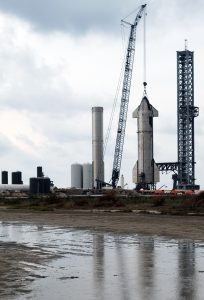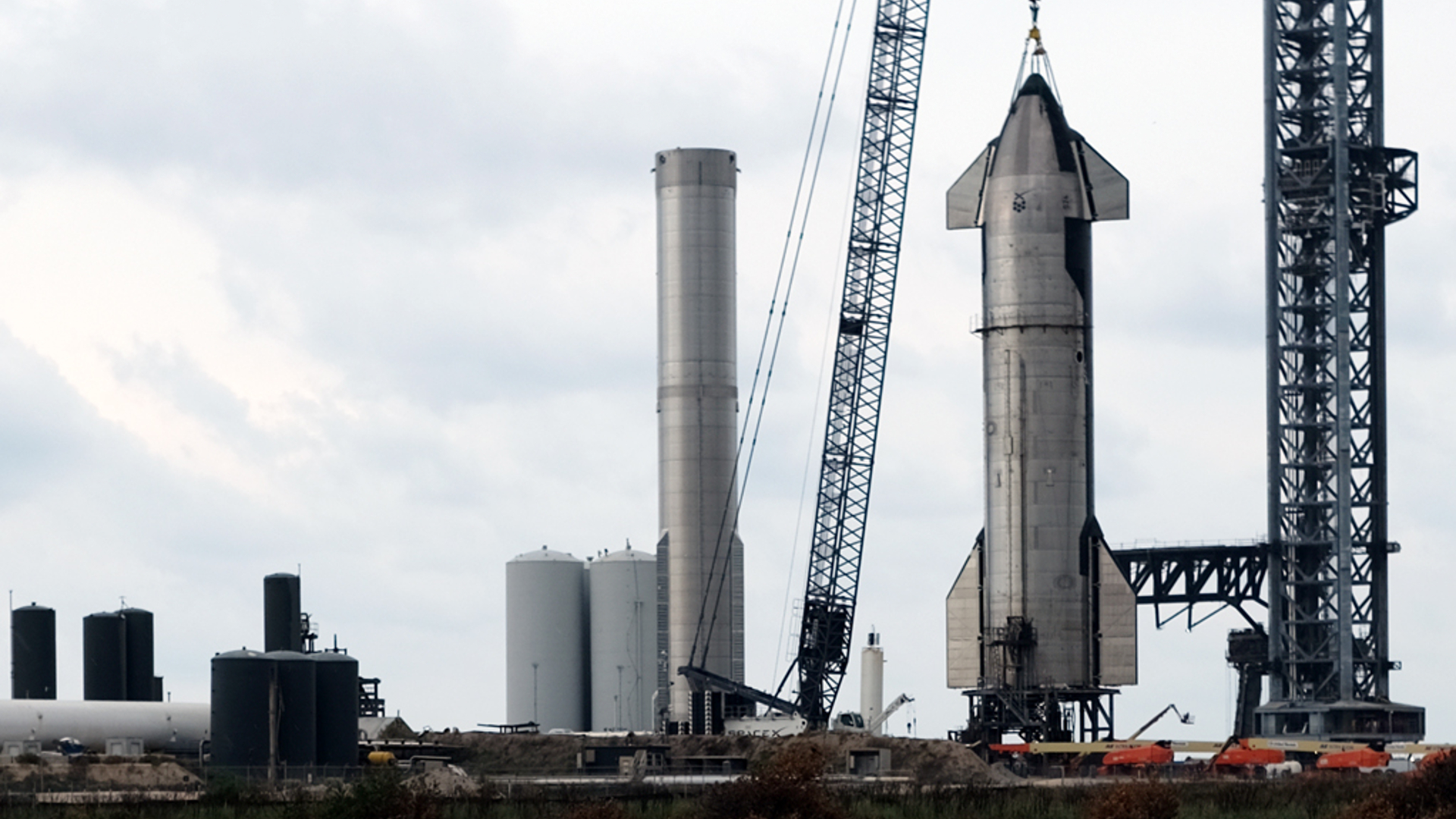
SpaceX founder and CEO Elon Musk said in late September that the first orbital Starship launch from the company’s Boca Chica site probably would take place this month, though a senior NASA official indicated on Oct. 31 that an early December launch is more realistic.
Mark Kirasich, deputy associate administrator for NASA’s Artemis Campaign Development, delivered that estimate during a live-streamed NASA Advisory Council meeting on Halloween, as reported by Reuters. The inaugural orbital launch would be the first of “four major Starship flights,” Reuters quoted him saying.
SpaceX is developing Starship as the Human Landing System to put U.S. astronauts on the moon for the first time in 50 years as part of the Artemis program per a $2.9 billion contract SpaceX signed with NASA in 2021. That mission, Artemis 3, is scheduled to take place in 2025 or 2026.
The company’s most recent launch from Boca Chica was its first completely successful suborbital test flight and landing with the flight of Starship prototype SN15 in May 2021.
SpaceX has for months been conducting tests on Starship SN24 in preparation for the first orbital flight, including static-fire ignition testing of its six engines simultaneously, though to date just seven of the Super Heavy BN7 booster rocket’s 33 engines have been fired together. As of Monday, the SN24 could be seen stacked atop the BN7, itself perched atop a massive launch platform, while SN25, the next Starship in the series, has been transported to the launch site from SpaceX’s Boca Chica production complex and was undergoing cryogenic pressure testing Monday.
Starship still has to clear a number of hurdles before attempting the launch, plans for which call for Starship and Super Heavy booster to separate just over two minute into the flight and the booster to land in the Gulf of Mexico some 20 miles offshore. The Starship would achieve orbit briefly before landing in the ocean inside the Navy’s Pacific Missile Range Facility about 60 miles north of Kauai, Hawaii.
A Federal Aviation Administration environmental assessment of the potential impact of orbital flight testing at Boca Chica resulted in a Finding of No Significant Impact, which cleared away a major obstacle to SpaceX’s plans, though the FAA is also requiring the company to take more than 75 separate actions to mitigate the impact and has not yet issued the necessary Launch Operator License for Starship’s first orbital flight. The agency, which announced the results of the assessment on Sept. 26, said it was just one step in the launch license application process.
“SpaceX also must meet FAA safety, risk and financial responsibility requirements before a license is issued for any launch activities,” the FAA said. “The FAA will make a license determination only after SpaceX provides all outstanding information and the agency can fully analyze it.”




